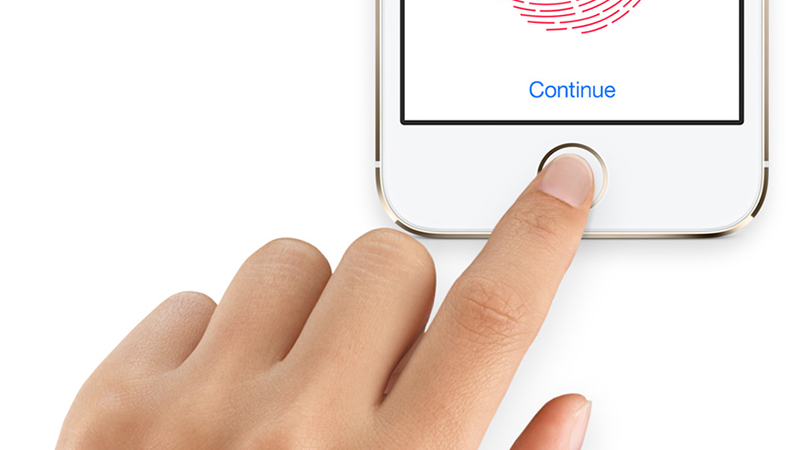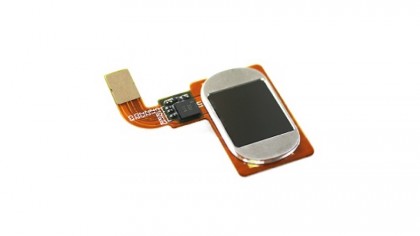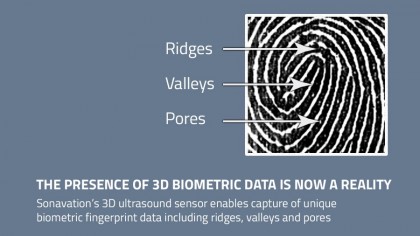The curious case of the vanishing iPhone button
Why fingerprint sensors will give buttons the boot

It looks like the iPhone home button's days are numbered. Multiple rumors say that the fingerprint scanner on the iPhone 7 - but more likely its 2017 successor - will sit inside the screen, rather than having dedicated hardware.
The change isn't just cosmetic, though. It would make the iPhone more secure and offer fewer mis-reads when trying to unlock your phone. It sounds pretty space age though, so we spoke to the experts to find out how the technology works, and why Apple is even considering it this early on.
The TouchID sensor in iPhones from the iPhone 5S onwards uses capacitive technology, which can detect the presence of conductive material such as skin (or cat paws).
The ring around the button detects when your finger is there, and the sensor then takes a high-resolution image of your fingerprint.
It's clever, but it isn't perfect. If water, for example, it gets between the sensor and your finger then TouchID often goes in a huff. And of course, any physical button is a potential way for water to get inside the device.
Earlier this year, LG Innotek demonstrated a fingerprint sensor that lives underneath a smartphone's glass, in a tiny space cut into the glass's underside.

As Beopmin Oh from LG Innotek's communication team explains to TechRadar:, "With this module the sensor is not exposed to the outside of the glass, so the manufacturer can produce a sleek design.
Get daily insight, inspiration and deals in your inbox
Sign up for breaking news, reviews, opinion, top tech deals, and more.
"The fingerprint recognition area can also be indicated by various patterns, and the high-strength cover glass protects the sensor from coming into contact with water or being damaged by scratches."
LG expects to see the sensors in smartphones but also in other ID-related applications, such as vehicle/driver identification. But what about Apple? "I'm sorry, but I can't tell you the specific information of any customer."
On the cards
"We believe that the next step in high-end smartphone design is to remove the physical buttons," Ulf Ritsvall, marketing director of Fingerprint Cards, told TechRadar.

Fingerprint Cards is company whose FPC1200 series fingerprint sensors have been designed specifically for mounting under glass, ceramic or other substances.
These sensors already appear in models from the likes of Huawei, and its 1200 series sensors are in devices such as the Vivo X7 and X7 Plus. The under-glass sensor is "scheduled for the second half of 2016". Any firms in particular? Ritsvall would rather not comment.
Ultrasound of the underground
Both LG and Fingerprint Cards use capacitive sensors, which detect electrical resistance. But there's another option: ultrasound.
In May 2016, Apple was awarded a patent for various biometric technologies - including an ultrasound version of Touch ID. And ultrasound is something the sensor firm Sonavation knows all about. In November 2015, it announced SonicTouch Ultrasound Biometric Authentication for mobile devices and the Internet of Things.
Sonavation's VP of marketing, Ilene Grimes, told us: "One of the great advantages of ultrasound is that unlike capacitive sensors, the high-frequency acoustic impediography (i.e. sound waves) can penetrate through a variety of obstacles: glass, metal, OLED, plastic and more."
"With glass, each device manufacturer has the option to build their cover display with glass of varying thicknesses, as the thicker the glass the more protective. Some devices have glass covers that are 400 microns and some use 700 microns or even thicker.
"Sonavation's technology can image through thicknesses greater than 1mm."

That's impressive: LG's sensor works up to 280 microns, so ultrasound is significantly better at penetrating substances such as glass.
But as Fingerprints Cards' Ritsvall points out, that comes at a price: battery.
"Ultrasound sensors have substantially higher power consumption," he says - and that's crucial while battery chemistry stubbornly resists any great technological leap forward.
"Even comparing competitors' capacitive sensors we have 2-5 times lower power consumption and is one reason behind our success," he says.
Dirty secret
There's more to life than a marginal difference in battery life, though. Ultrasound does offer some improvements over capacitive sensors, as Ilene Grimes explains: "Ultrasound is not adversely affected by environmental elements such as dirt, oils or lotions. In fact, these elements actually enhance the coupling between the fingerprint and the sensor."
The sensors also capture more data, "making verification infinitely more secure".
Naturally, we asked Sonavation whether its sensors might be going into phones from a company beginning with "A", but Grimes wouldn't comment on who it might or might not be working with.
However, the firm clearly wants be on as many devices as possible: Grimes says that its SonicTouch systems "have been designed and architected to support any mobile or Internet of Things solution." Beyond the interest in what Apple's doing, adding this technology into all of your gadgets would lead to an ultra-secure smart home - or help identify different users so they get their personal settings instantly.
Buttonless sensors are clearly coming, and we should see the first under-glass sensors this year. But as with any new way of doing things, teething troubles and yield issues (where production creates too many unusable iteams) mean that manufacturers introducing them will most likely incur additional costs in the short term.
While putting sensors underneath the glass is a "natural step", Fingerprint Cards' Ritsvall says it's a step you'll see in higher-end phones first.
"The premium phones that will be equipped with these sensors are less caring about the price tag," he says. "The design is much more important."
Writer, broadcaster, musician and kitchen gadget obsessive Carrie Marshall has been writing about tech since 1998, contributing sage advice and odd opinions to all kinds of magazines and websites as well as writing more than a dozen books. Her memoir, Carrie Kills A Man, is on sale now and her next book, about pop music, is out in 2025. She is the singer in Glaswegian rock band Unquiet Mind.
